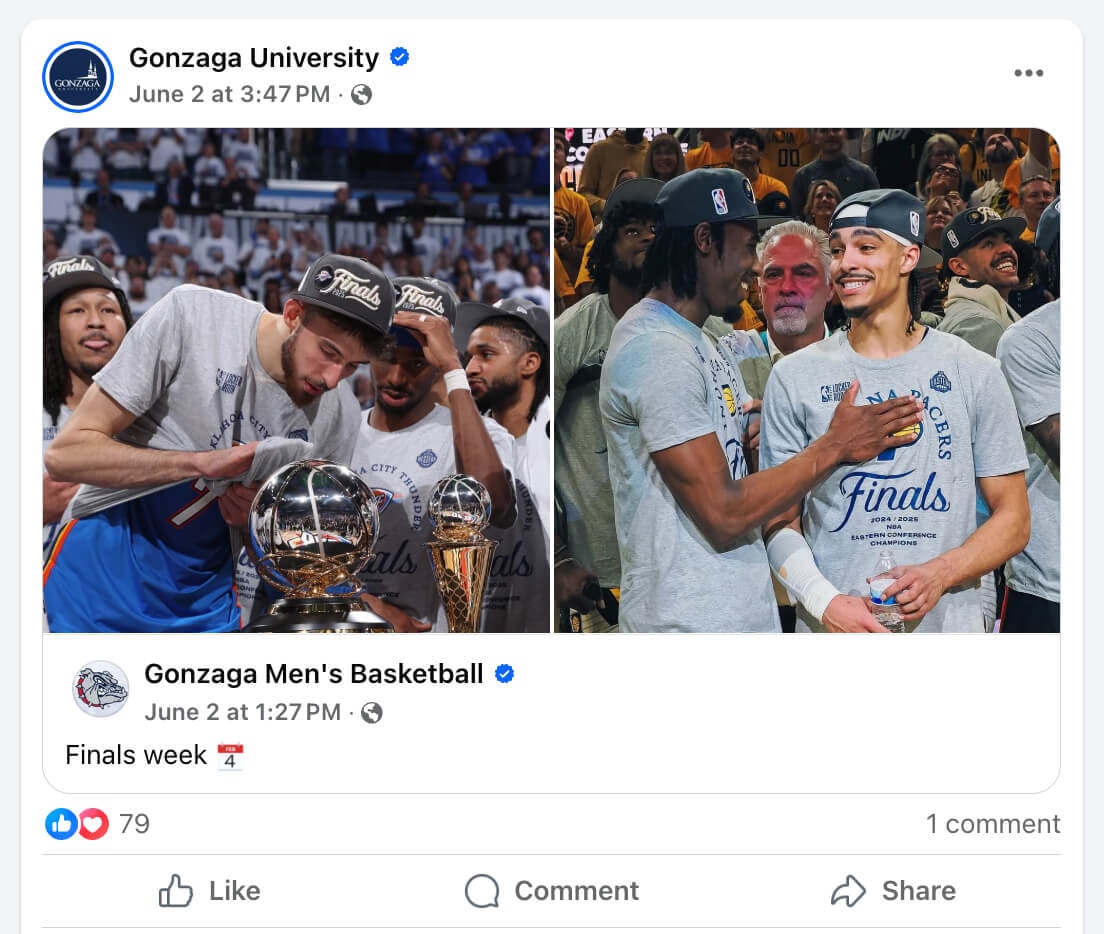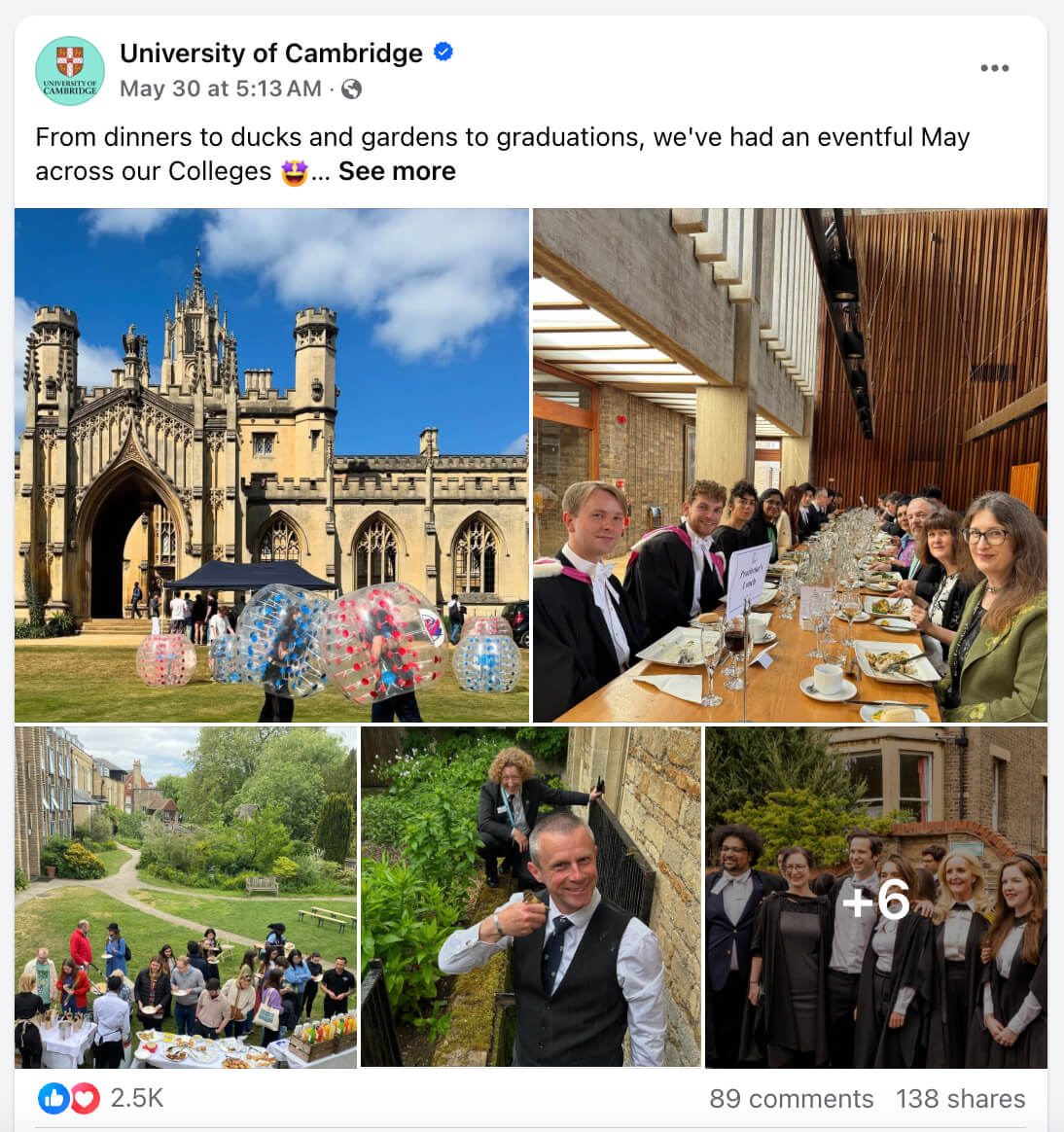The digital landscape in higher education has changed dramatically since the pandemic hit. What started as a rushed move to remote learning has grown into a sophisticated network of digital marketing strategies for higher education that are changing how schools connect with students, handle communications, and build lasting relationships with their communities.
Higher education institutions today are dealing with some tough challenges: fewer students enrolling, more competition from online-only schools, and students who want smooth digital experiences everywhere they go. The universities that are doing well right now have figured out social media management for higher education and put together comprehensive digital communication strategies that make student engagement the heart of what they do.
Modern higher education digital strategy is way more than just posting on Facebook or sending out mass emails. You need a strategic approach to creating engaging content, getting it out there, and engaging across multiple platforms at the same time. This is where innovative solutions like Juicer’s social media aggregation platform become really valuable, letting institutions bring their digital communications together while keeping authentic, personalized connections with all their different audiences.
Universities that use integrated digital approaches show real improvements in enrollment inquiries, keeping students around, and how well they handle crisis communication compared to schools that use disconnected approaches.
In this detailed guide, we’ll look at eight proven digital strategies that top universities are using to increase enrollment, make students happier, and build stronger campus communities. From social media strategy for higher education to crisis communication frameworks, these approaches will help your institution handle the complex digital world of today and beyond.
1. Social Media Aggregation and Centralized Communication
The best higher education social media strategies begin with bringing everything together. The days when individual departments could handle their social presence on their own are over. Today’s students interact with universities across multiple touchpoints—from admissions and academics to athletics and alumni relations—and they want a smooth experience the whole way through.
For major announcements, the official university account can reshare content posted by the niche group and broadcast it on its broader platform. Here’s an example of Gonzaga University’s Facebook page sharing the content from their basketball team:

Social media management for higher education needs a unified approach that brings together content from different departments while keeping each unit’s unique voice and purpose. Leading institutions are putting in place social media aggregation tools that let them:
• Bring together content curation from multiple departments and social accounts
• Keep track of brand mentions and engagement across all platforms at the same time
• Coordinate messaging during big announcements or crisis situations
• Look at performance across all digital touchpoints to see what works with different audience groups
Instead of letting fragmented messaging confuse prospective students, you can use Juicer, a social wall aggregator, to create unified displays of content that show off the full range of campus life while keeping consistent branding.
This approach works really well for digital content for higher education institutions because it lets them cut down on content creation work, add more content variety, and improve student engagement by showing off authentic, peer-generated content. The integrated approach also makes workflows across departments more efficient.
Universities that put social media aggregation strategies in place typically see real increases in overall engagement rates and big cuts in content creation time across departments. Even more important, centralized systems let teams make informed decisions about content strategy based on real-time performance data across all platforms.
2. Platform-Specific Content Strategy
Different social media platforms have different jobs in social media strategy for higher education, and successful institutions customize their content for each one. LinkedIn users are 80% aged 18-34, making it crucial for targeting graduate students and working professionals.
Instagram is still the best platform to showcase university life and emotionally engage with potential students. Colleges use Instagram to share insider information about academic programs, student success stories, campus events, and daily life experiences of current students.
LinkedIn is an important channel for career outcomes and professional development-based marketing in higher education. Universities that use LinkedIn strategically in their marketing get great engagement from adult students and working professionals. This approach creates valuable learning experiences for students while showing off what the institution accomplishes.
TikTok has become a powerful platform for higher education institutions, with top universities getting an average engagement rate of 6.7% according to a 2023 study, way higher than the average engagement rate on Instagram (2.43%) for higher education. This shows the platform’s amazing potential for authentic, fast-paced content that connects with Gen Z students. YouTube works as the platform for longer educational content, virtual campus tours, and detailed program explanations that support search engine optimization efforts through video content.
Data-driven platform strategies improve engagement rates and convert social media interactions into enrollment inquiries.
3. Unified Digital Communication Framework
Good higher education digital strategy means breaking down barriers between departments and creating a unified communication framework that works for all stakeholder groups—prospective students, current students, parents, faculty, staff, alumni, and community members.
A unified digital communication framework sets up brand voice guidelines that make sure all communications reflect what the institution stands for, message hierarchy systems that put critical information first, audience segmentation strategies that get relevant content to specific groups, and cross-platform integration that makes sure students can find consistent information across all channels.
Universities that use centralized communication frameworks report big improvements in:
• Fewer conflicting messages across departments
• Better crisis communication response times
• More student engagement with official university content
• Less time spent on content management tasks
Making unified communications work requires cultural change just as much as technology implementation. Leading institutions set up content teams with people from key departments, regular training sessions on brand guidelines, and shared content calendars that stop competing messages and take advantage of collaboration opportunities.
4. Student Engagement Through Digital Content
Modern digital content for universities has to put authentic student voices and experiences first over polished marketing messages. Today’s prospective students are smart consumers who can easily tell the difference between genuine content and promotional materials, and they consistently like peer-generated content better when making enrollment decisions.
The best ways to involve students focus on allowing them to share their real experiences through student ambassador programs, user-generated campaigns, collaborative content creation, and live event reporting. This allows higher education marketing teams to develop campaigns that ring true with target audiences while generating diverse, authentic content.
Research shows that certain types of digital content for colleges consistently get higher engagement rates:
• Behind-the-scenes academic content showing research labs, studio spaces, and specialized equipment
• Student success stories that highlight achievements, internships, and career outcomes
• Campus culture and life documentation, including traditions, events, and daily life experiences
• Faculty spotlights that make professors more human and show off their expertise and personality
• Alumni connections showing career paths and ongoing relationships with the institution
Universities that put student engagement strategies in place see real increases in social media engagement rates and measurable improvements in prospective student inquiry rates.

5. Brand Authenticity in Digital Spaces
Brand authenticity has become something higher education institutions can’t ignore. Students, especially Gen Z, have been trained to discern media effectively and can quickly identify fake or overproduced content. Colleges and universities need to be open and honest to gain the trust of potential students.
Authentic branding for universities on the web means being honest about issues and demonstrating how the college addresses them positively, showing diverse perspectives that indicate what campus life is actually like, maintaining consistent values in all communications, and embracing imperfections by posting material that is genuine and relatable.
The best social media strategies for colleges embrace transparency through regular updates about what the school is undertaking, openly discussing problems and how they are solving them, including student testimonials, and sharing behind-the-scenes details that show the human side of staff members and teachers.

6. Crisis Communication and Real-Time Updates
The pandemic completely changed what people expect from crisis communication in higher education. Students, parents, and stakeholders now want real-time updates, transparent information sharing, and consistent messaging across all channels during any big institutional change or emergency.
Good crisis communication needs multi-channel coordination, making sure that emergency information gets to all stakeholders at the same time, real-time updates that give accurate information as situations develop, clear message hierarchy that tells the difference between urgent safety information and routine updates, and stakeholder-specific messaging that addresses unique concerns.
Successful universities have gone beyond basic emergency notification systems to create comprehensive crisis communication frameworks that include pre-approved message templates for common scenarios, cross-platform publishing capabilities, real-time monitoring systems, and feedback mechanisms that allow two-way communication during crises.
7. Digital Equity and Accessibility
Digital equity is an integral part of effective digital marketing strategies in higher education. Institutions acknowledge that they need to offer opportunities for every student to engage in digital campus life independent of their technological access, abilities, or backgrounds.
Modern higher education faces several digital equity challenges: technology access gaps where students might not have reliable internet connections or updated devices, digital literacy differences among students from different backgrounds, accessibility requirements making sure that all digital content works for students with disabilities, and cultural and language barriers that might prevent full engagement.
Leading institutions address digital equity through multi-format content delivery that makes sure important information is available in different formats, mobile-optimized experiences recognizing that many students primarily access content through smartphones, offline accessibility options for critical information, and culturally responsive content that reflects and celebrates campus diversity.
When implementing social media management for higher education, accessibility considerations should include alt text for all images, captioning for video content, clear content hierarchy with proper heading structures, and color contrast compliance meeting WCAG guidelines.
8. Performance Analytics and Optimization
Decision-making using data is extremely crucial for effective marketing in higher education. Effective schools leverage sophisticated digital tools to comprehend the behavior of students, enhance the performance of their content, and effectively utilize their resources in digital marketing campaigns.
Effective university digital marketing campaigns track considerations that are directly associated with their goals. They track enrollment conversion rates to see how digital activity is converted into applications and enrollment choices. They track student engagement rates to discover substantive interactions. Content performance rates show which content gets the best reaction. And, platform efficiency rates show which channels give the greatest return on investment.
Leading institutions implement analytics strategies that include cross-platform data integration providing complete views of student journeys, predictive modeling using historical data to identify trends, A/B testing frameworks for systematic content optimization, and real-time monitoring dashboards enabling rapid response to high-performing content.
Implementation Framework: Getting Started
Implementing digital strategies for higher education requires careful planning, stakeholder buy-in, and systematic execution. Building on effective models from top-performing schools, here’s an effective blueprint to initiate digital transformation.
Phase 1: Assessment and Planning (Months 1-2)
Start with a thorough evaluation of your existing digital footprint, listing all official social media accounts by department, determining existing content quality and engagement, and reviewing technology infrastructure. Bring key stakeholders on board by taking a business case to senior leadership, involving department heads in joint planning sessions, and establishing cross-departmental working groups.
Phase 2: Technology Implementation (Months 2-4)
Configure analytics tracking and reporting dashboards, develop content calendars coordinated across all departments, set up Juicer’s social media aggregation system to display feeds on the websites, integrate existing social media accounts and establish content moderation workflows.
Phase 3: Rollout and Optimization (Months 4-6)
Start small and build as you go. Begin by testing your digital strategies with a few key departments or types of content. As you learn what works, gradually bring in other teams. Keep an eye on performance, make tweaks along the way, and regularly check in with your team to keep improving together.
Measuring Success and Future Trends
Effective measurement of higher education digital strategy success requires analytics that go beyond basic social media metrics. Leading institutions focus on key performance indicators that directly connect with institutional goals: enrollment conversion metrics, engagement quality indicators, and operational efficiency metrics.
Universities that implement digital marketing strategies see meaningful conversion rates from sustained digital engagement to application completion. Content creation efficiency measures show successful aggregation strategies can significantly reduce content management time, while response time performance tracks how quickly institutions respond to student inquiries across digital channels.
Successful higher education marketing strategies anticipate emerging trends, including artificial intelligence integration for content personalization and predictive analytics, virtual and augmented reality applications expanding beyond virtual campus tours, micro-learning content formats gaining popularity as students prefer bite-sized information, and privacy-first marketing approaches as students demand greater control over their data.
Conclusion: Building Your Digital Future
The institutions succeeding today share common characteristics: they put authentic student engagement first, leverage technology to create efficient communication systems, and maintain strong commitment to accessibility and inclusion in all their digital initiatives.
The eight strategies outlined in this guide provide a roadmap for institutions ready to transform their digital presence: social media aggregation and centralized communication, platform-specific content strategy, unified digital communication framework, student engagement through digital content, brand authenticity in digital spaces, crisis communication and real-time updates, digital equity and accessibility, and performance analytics and optimization.
The institutions that will thrive will be those that embrace these strategies while keeping focus on their core educational mission. Technology should enhance rather than replace human connections, and digital strategies should support rather than overshadow the fundamental work of education.
Juicer helps schools that want to upgrade their online platforms. It gives them the technology they need, with features tailored to schools. They have content structuring, management of multiple platforms, crisis communications tools, and detailed analytics.

The future of higher education belongs to those institutions that can most successfully blend academic excellence with digital innovation, creating experiences that engage students, enable learning, and build lasting communities that far outlast graduation. Start shaping that future today with tested digital solutions for higher education that put student success at the center of everything you do.




